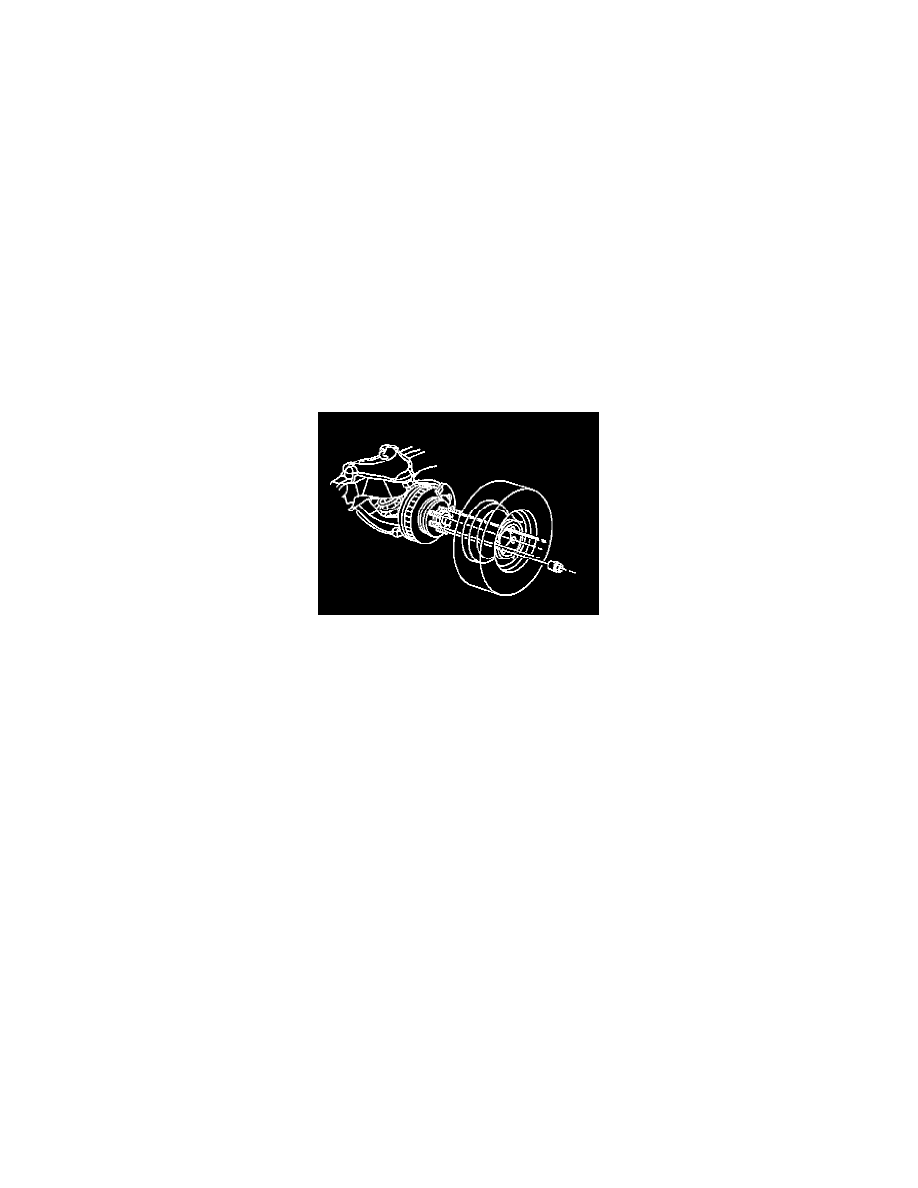Hombre S Regular Cab 4WD V6-4.3L (1999)

Wheels: Service and Repair
Tire and Wheel Removal and Installation
Caution: If penetrating oil gets on the vertical surfaces between the wheel and the rotor or drum it could cause the wheel to work loose as the vehicle
is driven, resulting in loss Of control and an injury accident
Notice: Never use heat to loosen a tight wheel It can shorten the life of the wheel, studs, or hub and bearing assemblies. Wheel nuts must be tightened
in sequence and to the specified torque to avoid bending the wheel or rotor.
Penetrating oil effectively removes tight wheels. Apply the oil sparingly to the hub surface, if you use oil. Removing wheels can be difficult, because
of foreign material or a tight fit between the wheel center hole and the hub or the rotor. Excessive force, such as hammering on the wheel or the tire,
can cause damage. Slightly tapping the tire side wall with a rubber mallet is acceptable. Wheel removal should be done in the following way:
1. Tighten all wheel nuts on the affected wheel. Do not torque the wheel nuts.
2. Loosen each wheel nut two turns.
3. Apply quick, hard jabs to the brake pedal in order to loosen the wheel. If this does not loosen the wheel, rock the vehicle from side to side, using
the body weight of 1 or more persons.
4. Repeat this procedure if the wheel is still tight.
Removal Procedure
1. Raise and support the vehicle with safety stands.
2. Remove the wheel hub cap, if equipped.
3. Remove the wheel nuts. Mark the location of the tire and wheel assembly to the hub assembly.
4. Remove the tire and wheel assembly.
5. Clean the wheel nuts, studs, and the wheel and rotor mounting surfaces.
Installation Procedure
Tools Required
-
0 - 300 N.m (0 - 200 lb ft) Torque Wrench
-
J 39544 Wheel Nut Torque Adapters
Before installing the wheels, remove any buildup of corrosion on the wheel mounting surface and brake drum or disc mounting surface by scraping
and wire brushing. Installing wheels with poor metal-to-metal contact at the mounting surfaces can cause wheel nuts to loosen. This can cause a wheel
to come off when the vehicle is moving, causing loss of control and possibly personal injury.
Notice: A torque wrench or J 39544 must be used to ensure that wheel nuts are tightened to specification. Never use lubricants or penetrating fluids
on wheel stud, nuts, or mounting surfaces, as this can raise the actual torque on the nut without a corresponding torque reading on the torque wrench.
Wheel nuts, studs, and mounting surfaces must be clean and dry. Failure to follow these instruction could result in wheel, nut, and /or stud damage.
